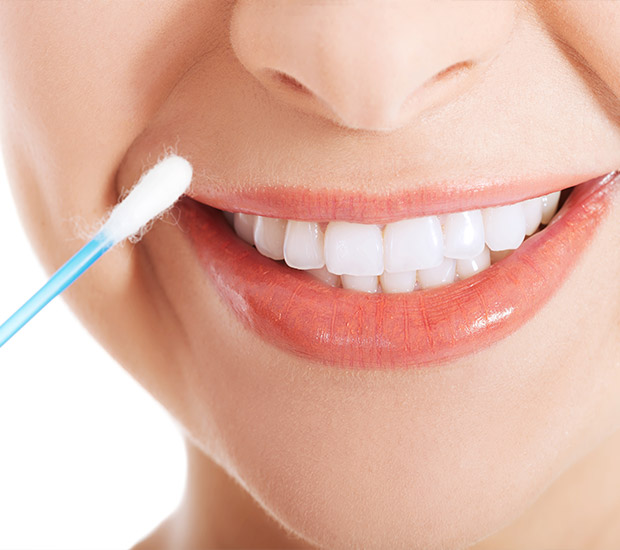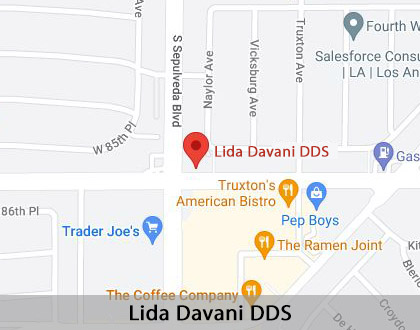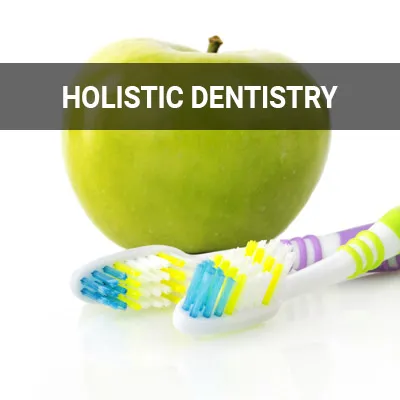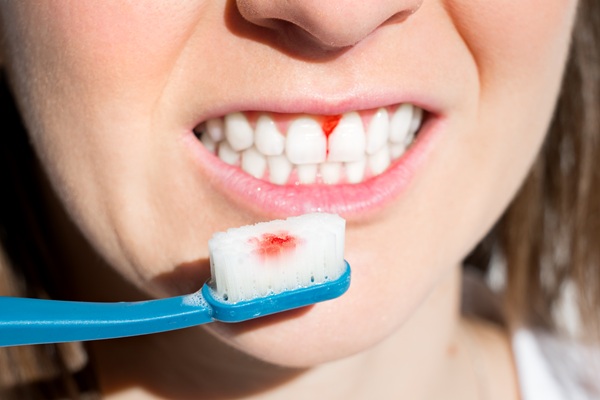OralDNA Diagnostic Test Los Angeles, CA
OralDNA® diagnostic testing, or dental saliva testing, can help patients learn more about their health needs. It is frequently an ideal alternative for patients who are uncomfortable with blood testing. OralDNA is a promising, emerging form of diagnostic testing that is slowly revolutionizing dentistry.
OralDNA testing is available at Lida Davani, DDS in Los Angeles and the surrounding area. We can help you fulfill your various salivary diagnostics needs. Call us today at (310) 402-2149 to schedule an appointment or to learn more about our services.
Understanding OralDNA Diagnostic Testing
Many patients do not realize that good oral health is imperative to overall health. Several experts consider the state of one's oral health to indicate the state of general health. This is due to the relationship between oral bacteria and the rest of the body. Most oral bacteria are good, and most harmful bacteria are easily kept at bay by the body's natural defenses and good oral hygiene.
OralDNA diagnostics testing uses saliva to detect various biocomponents, or oral bacteria, and how they may affect a patient's health. More specifically, the MyPerioPath® test can detect multiple oral pathogens that may cause gum disease and pose a risk to oral and systemic health. It can also help dentists determine if a patient has a higher risk of cardiovascular disease, diabetes, stroke, and birth complications.
“OralDNA diagnostics testing uses saliva to detect various biocomponents, or oral bacteria, and how they may affect a patient’s health.”
OralDNA and Disease Detection
OralDNA diagnostic testing can detect a variety of diseases, including:
- Chlamydia trachomatis and Neisseria gonorrhea in the oropharynx
- Herpes simplex virus in the oropharynx, types 1 and 2
- HPV-related oral cancers
- Novel coronavirus
- Yeast infections
It can also assess a patient's risk for periodontal infections, development of cavities, and HPV-related oral cancers. Additionally, OralDNA testing can identify early warning signs of oral pathogens and analyze gene markers concerning inflammatory responses. None of these tests are more complicated than having the patient provide a simple oral rinse collection.
Patients can also choose to undergo Alert 2™, a diagnostic test for both gum disease-causing oral pathogens and inherited genetic risk. Dentists can use these results to create the best treatment plan tailor-made for the patient's unique and individual needs. These results may also assist dentists in identifying any potential related systemic health risks.
“… OralDNA testing can identify early warning signs of oral pathogens and analyze gene markers concerning inflammatory responses.”
How OralDNA Testing Works
OralDNA testing is a quick and painless procedure that requires minimal effort on behalf of the patient. Sample collection requires the patient to swish and gargle a 5mL saline solution vigorously for 30 seconds, then spit it into the funneled collection tube. Our team will then open the preservative vial and pour the sample into the collection tube before preparing it to be sent off to the laboratory.
Like all salivary diagnostic testing, OralDNA diagnostic testing analyzes the secretions from the major and minor salivary glands, oro-nasopharyngeal secretions, gingival crevicular fluid, and cellular debris. Saliva contains all of these, along with antibodies, enzymes, growth factors, hormones, microbes, and their products. Many of these enter saliva through the blood. As such, saliva can be considered a reflection of the body's physiological functionality.
“OralDNA testing is a quick and painless procedure that requires minimal effort on behalf of the patient.”
Check out what others are saying about our dental services on Yelp: OralDNA Diagnostic Test in Los Angeles, CA
What OralDNA Testing Can Tell You
OralDNA can detect various oral pathogens that may threaten a patient's oral and systemic health. Many common pathogens that cause gum disease can also heighten one's risk of other systemic conditions. OralDNA diagnostic testing can help determine if patients were bone with specific genetic markers associated with increased inflammation, which is frequently linked with such conditions. It can often also determine the root cause of bad breath, dental decay, and tooth loss.
Such analysis is achieved by analyzing saliva samples for specific biomarkers. Biomarkers are an essential component of one's DNA. However, they are also found in antibodies, microbes, RNA, lipids, metabolites, and proteins. If these biomarkers are altered in action, concentration, function, or structure, the body may experience an onset, progression, or regression of a particular disorder or its immune response. Consequently, biomarkers are a critical tool in detecting, assessing, diagnosing, treating, and monitoring disease.
Questions Answered on This Page
Q. What is OralDNA diagnostic testing?
Q. What diseases can be detected by OralDNA testing?
Q. How does OralDNA testing work?
People Also Ask
Q. How does oral health affect overall health?
Q. How do cancer medications affect oral health?
Q. What is the importance of a healthy mouth baseline?
Q. Why is preventative care important? How can it save you money?
Interpreting OralDNA Test Results
MyPerioPath reports have two pages: a bacterial profile and clinical considerations. The bacterial profile consists of patient demographic information, along with a summary of the test results. Positive results indicate that the test has detected bacterial pathogens above the threshold level. The report will also show the patient's bacterial risk, along with a graphic representation of which pathogens are present and whether they meet the pathogen load threshold. At the end of the page, there is a section detailing any clinical significance these pathogens may have on a patient's risk for periodontal disease.
The clinical considerations page will also include the patient's demographic information and a summary and graphic presentation of the test results. However, it will also present various therapeutic options for a patient's unique pathogen profile and any follow-up testing recommendations. The latter half of the page includes a summary of the patient's clinical information at the time of testing and relevant links to additional information at MyOralDNA.com.
Frequently Asked Questions
Q. How do harmful oral bacteria enter the body?
A. The mouth is a natural breeding ground for bacteria. It also acts as an entryway to the digestive and respiratory tracts. Most bacteria are harmless, but poor oral hygiene may allow them to thrive at problematically high levels. However, genetics, environment, and lifestyle may also come into play. They may be transmitted via contact or manifest via dietary sugar, pregnancy hormones, disease, dentures, or braces.
Q. How does OralDNA testing make dental treatment more effective?
A. Without the MyPerioPath test results, your dentist cannot know the specific bacteria they must combat. As a result, patients may be either over- or under-treated, and it may take longer for any health conditions to be resolved. MyPerioPath tests give dentists an objective overview of a patient's needs.
Q. Will OralDNA testing change my treatment plan?
A. It depends. If your MyPerioPath results show that there is a bacterial risk involved, Lida Davani, DDS can adjust your treatment plan accordingly. If the results show no bacterial risk is involved, your treatment plan may no longer include any systemic antibiotic or antimicrobial rinses. Additionally, further testing may be necessary to determine the root cause of your condition and personal risk profile.
Q. Are there any waiting periods before I can give my sample?
A. It depends on your medication schedule. If you are on systemic antibiotics as pre-procedural medication or chronic medical conditions, you do not have to wait before saliva collection. However, if you use any over-the-counter oral care products, you will need to wait at least 30 minutes since your last application to give a sample. Similarly, there is a required wait time of 24 hours for patients using prescription-strength antimicrobial or antibiotic rinses and a two-week wait time for patients who have undergone dental procedures that disrupt the biofilm. Patients taking local antibiotics must also wait four weeks to give a saliva sample, and patients undergoing systemic antibiotics for acute conditions must wait for six.
Q. How does chronic oral inflammation affect the rest of the body?
A. There are two hypotheses for this: (1) Chronic inflammation in the oral cavity weakens the immune system by increasing the level of inflammatory markers in the bloodstream, or (2) the oral cavity collects any disease-causing bacteria that may enter the bloodstream. Consequently, periodontal disease may increase the risk of adverse overall health outcomes.
Dental Terminology
Call Us Today
Dental saliva tests can help many patients better understand themselves and their needs. We at Lida Davani, DDS may be able to help. Call us today at 310-402-2149 to schedule an appointment or to learn more about our services.
Helpful Related Links
- American Dental Association (ADA). Glossary of Dental Clinical Terms. 2023
About our business and website security
- Lida Davani, DDS was established in 2023.
- We accept the following payment methods: American Express, Cash, Check, Discover, MasterCard, and Visa
- We serve patients from the following counties: Los Angeles County
- We serve patients from the following cities: Los Angeles, Inglewood, Hawthorne, El Segundo, and Marina del Rey
- Norton Safe Web. View Details
- Trend Micro Site Safety Center. View Details
Back to top of OralDNA Diagnostic Test










